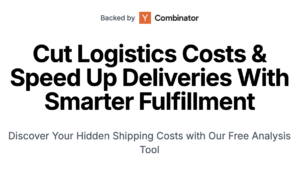Enablement Handbook
Capability Sheet
Elevating Sales Excellence: Unleashing the Power of Sales Enablement Platform Capabilities
by RevSpire Team on September 04
In this article, we will explore the diverse capabilities of sales enablement platforms, helping you understand how they can propel your sales force to new heights.
Content Publishing and Management: Fueling Sales Success
The heart of any sales enablement platform lies in its ability to efficiently manage and deliver content that sales teams require. Here are some key features to look out for:
Versatile Content Support: Your platform should accommodate various content types, from documents and presentations to images, videos, and web links. This ensures that your sales reps have access to a rich arsenal of resources.
Intuitive Content Organization: Effective content organization is vital. It should allow reps to quickly locate the information they need. Tailoring categories to factors like region, language, or industry vertical enhances usability.
Dynamic Content Updates: In a dynamic business environment, content needs constant updates. Your platform should enable easy content modification to keep information relevant and up-to-date.
Content Curation: Automatic aggregation of market, competitor, and customer news keeps your sales teams informed. It should be driven by user interests, ensuring the most relevant information surfaces.
Connect with Sellers: Navigating the Content Maze
Once your content is organized, it’s crucial to help sales teams efficiently find and customize it:
Efficient Search Functionality: Robust search capabilities are paramount. Sales reps should be able to find what they need quickly, with modern search algorithms prioritizing relevance.
Content Collection: Let your reps create collections of frequently used content. This helps streamline their workflow while ensuring that content remains current.
Field Team Empowerment: Specialized teams should have the tools to manage their own content, including translations and unique materials tailored to specific segments.
CRM Targeting: Integrate with your CRM system to present relevant content based on opportunity characteristics, ensuring a personalized customer experience.
Integration: Seamless Harmony
To accommodate today’s tech-driven workforce, sales enablement platforms should seamlessly integrate with various systems and devices:
Cloud-Based Storage: Support for cloud-based storage systems simplifies content publication and updates, ensuring consistency across platforms.
CRM Integration: Automatically attach pitch activity to the relevant CRM records, maintaining a comprehensive view of each deal.
Marketing Automation Integration: Improve lead nurturing and content personalization by integrating with marketing automation platforms such as Marketo and Pardot.
Messaging App Integration: Foster real-time collaboration and provide instant notifications within messaging apps like Teams and Slack to enhance sales team communication.
Email Integration: Enable email client compatibility and tracking for email pitches sent through the sales enablement platform, ensuring timely follow-ups and engagement monitoring.
Social Media Integration: Seamlessly connect your sales enablement platform with LinkedIn for prospecting, social selling, and leveraging professional networks.-
Data Enrichment Integration: Enhance lead and contact information by integrating data enrichment services like ZoomInfo, ensuring your sales teams have accurate and up-to-date prospect data.
Single Sign-On Integration: Integration with single sign-on solutions enhances account management for both publishers and reps.
Mobile Accessibility: Ensure that your platform supports both online and offline mobile usage, providing flexibility for the modern, on-the-go sales professional.
Tracking and Administration: Measure and Optimize
Gain insights into the effectiveness of your sales enablement and training efforts:
Testing and Grading: Implement online testing and grading, allowing trainers and managers to assess performance.
Compliance: Mandate necessary training and monitor completion and pass rates to ensure compliance.
System Health: Ensuring Ongoing Success
Adoption: Monitor platform adoption to ensure widespread usage.
Breadth and Depth: Analyze user engagement depth to identify power users and areas for improvement.
User Activity: Identify influential users, gather feedback, and fine-tune your outreach and education efforts.
Content Performance Reports: Optimizing Content Usage
Content Coverage: Assess whether all necessary content types are available to your sales teams.
Content Freshness: Ensure content remains up-to-date by tracking age and turnover.
Content Awareness: Confirm that reps are aware of the available content.
Content Usage: Monitor how frequently content is viewed, downloaded, and bookmarked.
Pitch Activity: Analyze pitched content and its impact on customer engagement.
Content Comparison: Explore how content is modified and repackaged in the field.
Content Engagement: Evaluate customer engagement with pitched content.
Business Impact: Measure the influence of content on revenue, deal conversion, and ROI.
In conclusion, a robust sales enablement platform is a strategic investment for organizations aiming to elevate their sales performance. By harnessing the diverse capabilities outlined above, you can equip your sales force with the tools and knowledge they need to excel in today’s competitive marketplace. Stay ahead of the curve, enhance your sales enablement strategy, and watch your sales soar to new heights.

By RevSpire Team
The RevSpire Team champions our sales enablement platform, empowering businesses to engage in more meaningful buyer conversations and hit revenue targets. RevSpire leverages AI-driven search, analytics, training, guided selling, and seamless integrations for a modern, user-friendly solution loved by sales reps and marketers.
